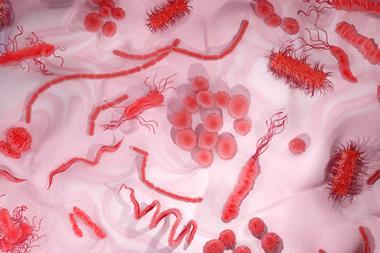An artificial photosynthesis system that combines semiconducting nanoparticles with a non-photosynthetic bacterium could offer a promising new route for producing sustainable solar-driven hydrogen fuel.
Other artificial photosynthesis systems that integrate nanomaterials into living microbes have been developed before, which reduce carbon dioxide or produce hydrogen, for example. However, usually it is the microorganism itself that makes the product via a metabolic pathway, which is aided by a light-activated nanomaterial that supplies necessary electrons.
Now, the labs of Kara Bren and Todd Krauss at the University of Rochester, US, have turned this concept on its head. They have designed a new hybrid bio-nano system that combines finely-tuned photocatalytic semiconducting nanoparticles to make hydrogen with a bacterium which, while it does not photosynthesise or make hydrogen itself, it provides the necessary electrons to the nanomaterial to synthesise hydrogen.
‘In this system, catalysis takes place at the nanoparticle,’ says Bren. ‘The development and study of nanoparticle catalysts is a highly active field, and thus we expect that the range of reactions that might be supported in this or related systems will expand.’ This could overcome the limitations of traditional approaches that rely on compatible bacterial metabolic pathways and struggle to precisely control nanomaterial properties inside organisms.
The nanomaterial component of the new system derives from work by Krauss’s lab in 2012 when his team showed that cadmium selenide nanoparticles can absorb light to catalyse hydrogen production in water. The electron source in that system is a chemical reductant, such as ascorbic acid. However, electron transfer to the nanoparticles was inefficient and required very high concentrations of the reductant to be of any use beyond lab studies.
Meanwhile, Bren has spent her career studying cytochromes, which are iron-containing proteins that are involved in electron transport and redox catalysis. Bren was particularly intrigued by the bacterium Shewanella oneidensis, which is decorated with many cytochromes. Some of these assist electron transfer outside the organism to a wide range of substrates, including metal ions and solid metal oxide particles.
‘As a long-term collaborator with Todd on the photochemical hydrogen production project, I started wondering whether Shewanella might engage in extracellular electron transport to cadmium selenide,’ says Bren. This would essentially replace ascorbic acid with the nutrients for Shewanella, a favourite being lactate, which is abundant in fermentation waste streams, Bren explains.
To find out, the team tried several different configurations but found the simplest system worked best: a strain of Shewanella oneidensis that was cultured with cadmium selenide nanocrystals in anaerobic conditions. These were placed beneath green LEDs and constantly shaken to keep the cultures agitated.
The microbes formed a biofilm containing the cadmium selenide, which remained catalytically active for much longer than in the previous system with ascorbic acid. Results showed that the system produced hydrogen for about a week and could be reactivated by replenishing the nutrients.
‘This is a highly innovative approach,’ comments Nikhil Malvankar, who investigates electron transport in proteins at Yale University, US. He suggests that in the future the concept could be applied to other bacteria that use hair-like ‘nanowire’ proteins, which his lab studies, instead of inorganic semiconducting nanocrystals as photosensitisers, which can be toxic, he explains.
Bren’s team has already found that the system does not work at higher cadmium selenide concentrations owing to the nanoparticles’ toxicity. However, she says they are working on ways around this. ‘We have plans to study the electron transfer pathways and to understand what factors determine hydrogen production catalysis rate and efficiency but we are just getting started,’ says Bren. ‘I like to imagine that we might use some variation of this system for distributed solar-driven hydrogen production using waste lactate as a cheap source of nutrients,’ she adds.
References
E Edwards et al, Proc. Nat. Acad, Sci. USA, 2023, DOI: 10.1073/pnas.2206975120












No comments yet